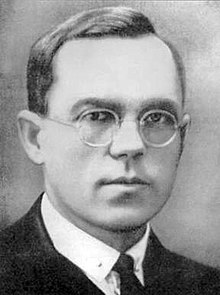Kondratiev – Riding the Economic Wave
LET’S escape Brexit and see what’s happening in the wider world. Most forecasters are gloomy about global economic prospects. According to Schroders, doyen of UK assets managers: “We forecast a more stagflationary environment in 2019 with global growth set to slow and inflation to rise”. The Davos World Economic Forum predicts a “sharp drop-off in world trade growth, which fell from over 5 per cent at the beginning of 2018 to nearly zero at the end”. Forbes business magazine warns: “The biggest problem for the global economy in 2019 will be massive business failures that could also lead to bank failures in emerging markets”.
Of course, the forecasters have been wrong before but it is clear that the main analysts of the global capitalist economy are pessimistic about current trends. They are right to be worried.
The international economy operates in pulses christened Kondratiev waves after Nicolai Kondratiev (1892-1938), the Russian economist and statistician who first identified them. These K-waves consist of an expansionary upswing lasting normally 15-20 years, followed by a downswing of similar length. We are now in such a downswing that could last till the 2030s.
What causes Kondratiev pulses? There is a rich literature trying to identify the cause, in particular the work of the Belgian economist, the late, great Ernest Mandel. Crudely, it works like this. Social and economic conditions mature to spark a runaway investment boom in the latest cluster of new technologies. After a period, excess investment and increased competition lower rates of profitability, curbing the boom.
At the same time – because this is as much a sociological as an economic process – growth expands the global workforce, both in numbers and geographically. The new, militant workforce launches social struggles to capture some of the wealth created in the boom. This, in turn, adds to the squeeze on profits. The peak and early down wave are characterised by violent social conflicts, whose outcome determines the length of the contraction.
…click on the above link to read the rest of the article…
